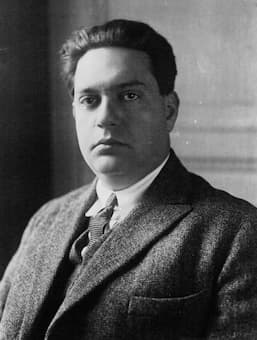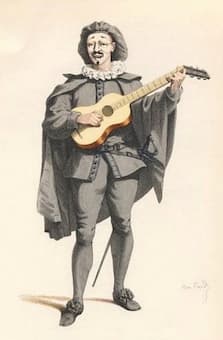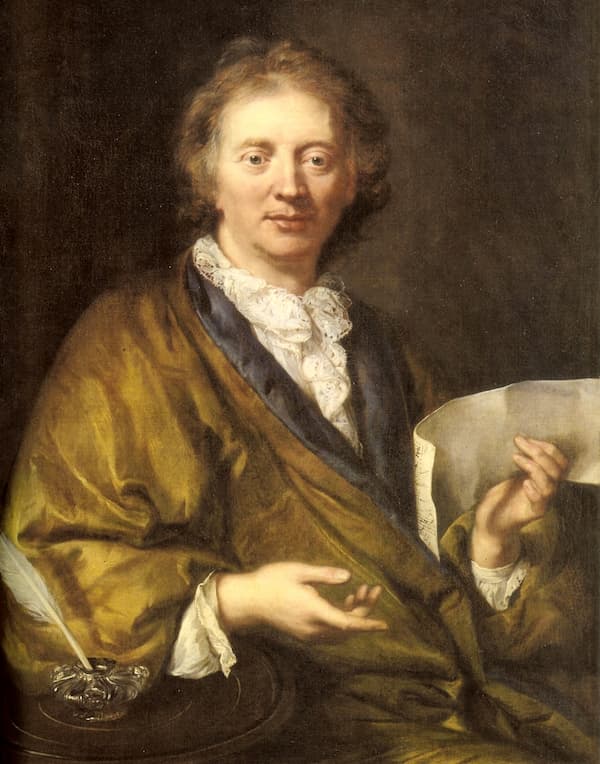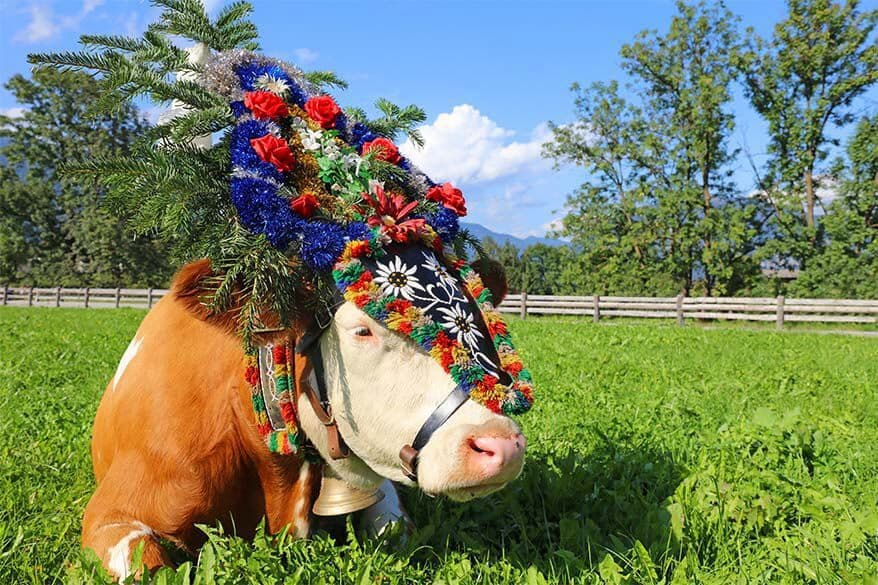
Darius Milhaud (1923)
In 1936, the French composer Darius Milhaud (1892-1974) wrote incidental music for Le médécin volant (The Flying Doctor), a play by Charles Vildrac based on Molière’s play of the same name, which uses Italian commedia dell’arte characters. The title of the work comes from the business where the servant must be himself and at the same time his false doctor brother, who has to appear in different places just as the servant has vanished. To move from the top of the house to the ground floor, for example, was accomplished by means of a rope.
The goal, of course, is for the servant to help his master’s problems with love. The Vildrac version opened at the Théâtre Scaramouche in Paris in May 1937.

Maurice Sand: Scaramouche (1860)
In 1937, at the request of Milhaud’s teacher, Marguerite Long, he created a version for 2 pianos. She was looking for music for two former students, Marcelle Meyer and Ida Jankelevitch, for a performance at the 1937 International Dog Show in Paris. Milhaud took the name of the work from the theatre where Le médécin volant had played and then added a middle movement, a piece he wrote in 1935 for stage music for a play by Jules Supervielle, Bolivar. And so we have Scaramouche.
As a commedia dell’arte character, Scaramouche is a stock clown, serving sometimes as the servant and sometimes as the henchman. He usually appeared in black clothing and was often beaten by his master, Harlequin, both for his boasting and his cowardice.
The first movement uses an old English children’s count-down tune known as ‘Ten green bottles hanging on a wall,’ a smaller version of ’99 Bottles of Beer.’ The lively movement carries us immediately into the world of the flying servants, seemingly being everywhere at once!
Darius Milhaud: Scaramouche – I. Vif (Sohre Rahbari, saxophone; Belgian Radio and Television Philharmonic Orchestra; Alexande Rahbari, cond.)
The second movement gives us time for the love story.
Darius Milhaud: Scaramouche – II. Modéré (Sohre Rahbari, saxophone; Belgian Radio and Television Philharmonic Orchestra; Alexande Rahbari, cond.)
In the final movement, we seem to journey to South America, where Milhaud had served earlier his life when he was secretary to Paul Claudel, the French Ambassador to Brazil. This is probably the most familiar melody from this suite.
Darius Milhaud: Scaramouche – III. Brazileira (Sohre Rahbari, saxophone; Belgian Radio and Television Philharmonic Orchestra; Alexande Rahbari, cond.)
The adaptation of a Molière play for children is captured perfectly in Milhaud’s music and the work proved to be unexpectedly popular. Originally written for alto saxophone and orchestra, it was also rewritten for clarinet and orchestra.
Darius Milhaud: Scaramouche, Op. 165d (version for clarinet and piano) – III. Brazileira (Jean-Marc Fessard, clarinet; Eliane Reyes, piano)
The original two-piano recording gives us an idea of what would have been heard at the 1937 Paris Dog Show!
Darius Milhaud: Scaramouche, Op. 165b – III. Brazileira (Martha Argerich and Gabriele Baldocci, pianos
The other versions for sax and clarinet had their advocates. Benny Goodman gave the debut of the clarinet version in New York in 1941 and Jascha Heifeitz wrote a version for violin and piano but of only the final two movements, but with his own virtuosic additions.
Darius Milhaud: Scaramouche, Op. 165b – III. Braziliera (arr. J. Heifetz) (A Ruben haronian, violin; Svetlana Safonova, piano)
Milhaud also did a version for sax quartet, and other arrangers did version for sax and wind quintet, for wind orchestra, and so on.
Milhaud, at first, didn’t want the piece to be published because it was such a light work and would detract from his more serious compositions. His publisher urged him on and it was a success – shortly after publications, he reported to Milhaud that the American market was already requesting 500 copies and 1,000 copies were requested for other markets.
The work was an unexpected success for Milhaud and has been one of the pieces where his memorable time in South American has come to the fore again.
For more of the best in classical music, sign up to our E-Newsletter


